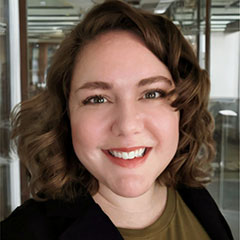Around the world, educators are breaking from traditional structures used to staff classrooms. A movement is building as schools and systems pursue transformational changes to meet the needs of all students and make the job of teaching more attractive and sustainable.
“It’s more important than ever that those innovations don’t occur in isolation,” said Kirsten Baesler, superintendent of the North Dakota Department of Public Instruction, and the longest-serving state chief school officer in the United States.
“There are so many good elements of transformation and improvement that are occurring out there and if we don’t come at it with a connected cohesive [plan], it’s just going to be isolated ideas, competing for attention and funding,” she said. “Connecting the dots is critical and it’s up to leaders to connect the dots.”
She’s one of hundreds of leaders — including researchers, educators, principals, superintendents, education supporters, higher education faculty and philanthropists — who gathered for two days in February for the virtual Strategic School Staffing Summit hosted by the Next Education Workforce™ initiative at Arizona State University’s Mary Lou Fulton College for Teaching and Learning Innovation. This year’s Summit included participants from 44 U.S. states and international locations including the U.S. Virgin Islands, Canada, the United Kingdom, Netherlands, Ireland, Sudan and Australia.
The annual convening celebrates innovative and practical approaches to strategic school staffing with an emphasis on practices and conditions that enable a more diverse, team-based education workforce. For the first time, leaders had access to a new shared framework that captures those conditions and practices — the Strategic School Staffing framework.

Source: Education First
“There was a need in the field to create some sort of common language and common framework to help all of us working really hard to think differently about how we organize talent within schools,” said Kelly Kovacic Duran, lead author of the framework and a principal consultant at Education First.
Education First built the framework following a nationwide scan of strategic school staffing models, said Kovacic Duran. “We talked to a number of different educators and system leaders and support providers to uncover, ‘What are those models and bright spots and examples?’ and then distilled that into a framework that articulates, ‘What are the characteristics of strategic school staffing? And what are the enabling conditions that are essential for helping support these models?’”
Summit presenters shared their experiences grounded in both the characteristics and enabling conditions of strategic school staffing. Sessions showcased more than a dozen school models, demonstrating different approaches to distributed leadership and innovative teaming structures. The Summit also delved into state and federal policy, collective bargaining, teacher preparation pathways, research and funding.
A coalition of organizations — the Coalition to Reimagine the Teaching Role — is already working to create the right conditions to support the scale and wider adoption of strategic school staffing models.
“This is a coalition that actually grew out of a Summit a couple of years ago, where a group of people in an unconference session started meeting to talk about collaborating around federal policy,” said Bryan Hassel, co-president of Public Impact and one of five Coalition co-founding members. The coalition has since grown to more than two dozen member organizations, focusing on policy as well as data and research.
In a Summit keynote, U.S. Deputy Secretary of Education Cindy Marten discussed the administration’s education policy priorities and reactions to the strategic school staffing movement.
In 2023, Marten visited Arizona and toured schools implementing innovative Next Education Workforce models to kick off her national “Raise the Bar: Lead the World” tour. She met with Mesa Public Schools superintendent Andi Fourlis, who has championed the adoption of these models in more than half of the system’s schools.
From the Center on Reinventing Public Education: Crossing the chasm: How one district is moving its innovative staffing model from pilot to mainstream
Fourlis, Marten said, “shaped my thinking on ‘Raise the Bar’ when she said teachers aren’t leaving the profession; they’re leaving the working conditions — and a teacher’s working conditions are our students’ learning conditions.”
“That’s the power of strategic school staffing,” said Frances Messano, CEO at NewSchools Venture Fund.
“Strategic staffing is a really critical way for achieving two goals: Providing students with more personalized learning experiences that meet their needs, but also as a way to empower teachers,” she said. “It’s about a set of principles and characteristics, not one single approach.”
At its core is a focus on equity. “In my work as we’re funding innovation across the field, what I always say is that the future is here in the present. It’s just not equally accessible to everyone,” she said. “For those that are doing work on strategic staffing right now, they’re answering the call coming out of the pandemic that we can’t keep doing things the way we’ve always been doing it. It’s a moment where we need to innovate and develop new approaches to teaching and learning that work better for our students and for our teachers.”
Save the date: Join us at next year’s Strategic School Staffing Summit on Feb. 5-6, 2025. The call for session proposals will open this summer.
Learn more about the Next Education Workforce: Join us for a free, one-hour virtual information session.


